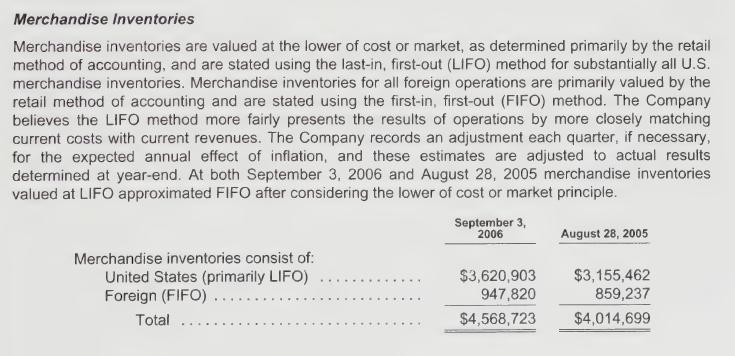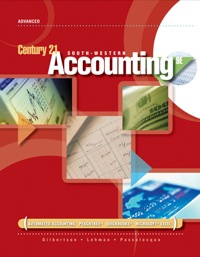Question:
Costco expects payment for merchandise at the time of sale. The company accepts cash, checks, debit cards, and credit cards. These transactions do not result in an accounts receivable balance. Even so, the company's balance sheet does report an amount for accounts receivable.
Instructions:
Using Appendix B on page B-11 in this textbook, refer to Costco's Notes to Consolidated Financial Statements to answer the following questions.
1. What is the content of net receivables?
2. What are the amounts for allowance for doubtful accounts on August 28, 2005 and September 3, 2006?
3. How do you think the allowance for doubtful accounts would change if Costco granted credit to its customers?
Data from Appendix B on page B-11


Transcribed Image Text:
Short-term Investments In general, short-term investments have a maturity of three months to five years at the date of purchase. Investments with maturities beyond five years may be classified as short-term based on their highly liquid nature and because such marketable securities represent the investment of cash that is available for current operations. Short-term investments classified as available-for-sale are recorded at market value using the specific identification method with the unrealized gains and losses reflected in accumulated other comprehensive income until realized. The estimate of fair value is based on publicly available market information or other estimates determined by management. Realized gains and losses from the sale of available-for-sale securities, if any, are determined on a specific identification basis. Receivables, net Receivables consist primarily of vendor rebates and promotional allowances, receivables from government tax authorities, reinsurance receivables held by the Company's wholly-owned captive insurance subsidiary and other miscellaneous amounts due to the Company. Amounts are recorded net of an allowance for doubtful accounts of $2,423 at September 3, 2006 and $1,416 at August 28, 2005. Management determines the allowance for doubtful accounts based on historical experience and application of the specific identification method. Vendor Rebates and Allowances Periodic payments from vendors in the form of volume rebates or other purchase discounts that are evidenced by signed agreements are reflected in the carrying value of the inventory when earned or as the Company progresses towards earning the rebate or discount and as a component of cost of sales as the merchandise is sold. Other consideration received from vendors is generally recorded as a reduction of merchandise costs upon completion of contractual milestones, terms of the related agreement, or by other systematic and rational approach.









